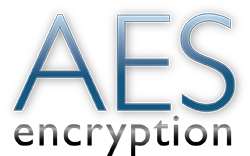
Encryption is the process of altering plaintext information using an algorithm (AES) to make it unreadable except to those who have a key that unlocks the encryption. This process will encrypt the information and provides security to the contents of that information.
Data protection software and applications that incorporate encryption stand to provide the best possible benefit to users with various data protection requirements.
Militaries and governments have been using encryption for secret communication since a long time. However, the use of encryption has also picked up in civilian systems to protect communication and data.
Individuals and organizations can use encryption for different types of data. Data can either be “at rest”, “in motion”, or “in use”. Encrypting files, folders, and drives or any other digital content can help protect them in the event physical or non-encryption security measures fail.Various transactions that are transmitted over the Internet also use encryption for secure lines (SSL). Intercepting “in transit” data is very much possible these days, and the use of encryption to secure transmitted data can help in securing the contents of the data.
In recent times, encryption has been recommended as the very best method to secure data and protect valuable information. There have been many different types of algorithms or ciphers over the past decades that have been put to maximum use in the military, government institutions, as well as businesses. However, with time, the ability to break the cipher and gain access to protected data led to major research and development, led by the National Institute of Standards and Technology, into the development of better algorithms that would be extremely difficult to crack. One of these initiatives led to a worldwide call for submissions of encryption algorithms issued by the US Government’s National Institute of Standards and Technology (NIST) in 1997 and completed in 2000.
As stated by the NIST back then, “The National Institute of Standards and Technology (NIST) had been working with industry and the cryptographic community to develop an Advanced Encryption Standard (AES). The aim was to develop a Federal Information Processing Standard (FIPS) that specifies an encryption algorithm(s) capable of protecting sensitive government information well into the next century. The algorithm(s) is expected to be used by the U.S. Government and, on a voluntary basis, by the private sector.”
After heavy competition and testing, the AES finalist candidate algorithms were MARS, RC6, Rijndael, Serpent, and Twofish. The Rijndael cipher took the lead in the end, and having further tested the viability of the algorithm, on October 2, 2000, an announcement was made by NIST that Rijndael was selected to be propose for the AES.
AES has become the most widely used encryption standard for protecting network traffic, personal data, and corporate IT infrastructures worldwide. With recent advancements in Internet technologies and cloud computing, personal and business-critical data and information are within reach of anyone who gains access to that information. It is therefore even more critical that a more secure encryption standard such as AES be used.
Personal data and corporate IT infrastructures can use the AES encryption as a robust, affordable, and flexible option and stay protected with the best data protection algorithm available.
Advance Encryption Standard replaced the outdated and often compromised DES as the standard and the winning algorithm, Rijndael, was developed by two Belgian cryptologists Vincent Rijmen and Joan Daemen.
Because AES is the strongest encryption available, it was selected by NIST as a Federal Information Processing Standard in November 2001 (FIPS-197). Further on, in June 2003 the U.S. Government (NSA) gave way to the AES as a standard to be used for all Top Secret and classified information protection.
A good data protection software should at least support 128- and 256-bit encryption keys. It is slightly faster to encrypt and decrypt data protected with 128-bit AES, but with today’s fast PCs the time difference is barely notable.
Important
It is important to not base your overall data protection mechanisms on encryption alone. Always use a password, or even better, a “pass phrase”, which is easy to remember but difficult to break.
Why Is AES Better Than Other Algorithms?

AES is considered to be one of the most secure encryption algorithms available. It is more secure than other algorithms due to its use of a larger key size and its use of a highly complex algorithm. AES also has the advantage of being very fast and efficient, making it a great choice for applications that require high levels of security.
Reasons Of AES Being Most Popular
AES is the most popular encryption algorithm because it is fast, secure, and relatively easy to implement. It is also widely accepted and used in many applications, including banking and online transactions. AES is a symmetric key algorithm, meaning that the same key is used for both encryption and decryption. This makes it very secure, as it is much more difficult to crack than other algorithms. Additionally, AES is a block cipher, meaning that it divides data into blocks before encryption and decryption, making
Best AES Encryption Algorithm
The best AES encryption algorithm depends on the specific application and security requirements. Generally, the most secure AES algorithm is the 256-bit Advanced Encryption Standard (AES-256). This algorithm is considered to be the most secure and is used in many applications, including banking and online transactions. ChaCha20-Poly1305 is a more recent encryption algorithm that is faster and more secure than AES-256. RSA-2048 is an asymmetric encryption algorithm that is commonly used for encrypting communications, such as messages, calls, and media. Other algorithms, such as AES-128 and AES-192, are also secure and are used in some applications. However, AES-256 is the most secure and is recommended for most applications.
The best encryption algorithms depend on the specific needs of the user.
Why Is Encryption In AES Faster Compared To Decryption?
Encryption in AES is faster compared to decryption because it requires fewer operations. In AES encryption, the data is first split into blocks and then each block is encrypted using a key. This process is relatively fast since it only requires the encryption of each block with the same key. On the other hand, decryption requires the reverse process of encryption, which requires more rounds of operations to decrypt the data. Therefore, encryption in AES is faster compared to decryption.
Strongest File Encryption
The strongest file encryption is Advanced Encryption Standard (AES).
Most Unbreakable Encryption
The most unbreakable encryption is the one-time pad, which is a type of encryption that uses a randomly generated key for each encryption and decryption process. This type of encryption is considered unbreakable because it is impossible to decrypt a one-time pad without the exact key used to encrypt it.
Greatest Encryption Device
The greatest encryption device is the Enigma machine, which was developed by German engineer Arthur Scherbius in 1918. The Enigma machine used a complex system of rotors, cables, and switches to encrypt messages. It was used by the German military during World War II and was eventually cracked by British cryptographers.
Main Features Of AES
The main features of AES (Advanced Encryption Standard) are:
1. AES is a symmetric-key algorithm, meaning the same key is used for both encryption and decryption.
2. AES is a block cipher, meaning that data is encrypted and decrypted in fixed-length blocks.
3. AES is a secure algorithm, meaning that it has been extensively tested and is widely accepted as being secure.
4. AES is fast, meaning that it can encrypt and decrypt data quickly.
5. AES is resilient to attack, meaning that it is difficult to break even if the attacker has access to the encrypted data.
Types Of AES Encryption
There are three types of AES encryption:
1. AES-128 – uses a 128-bit key.
2. AES-192 – uses a 192-bit key.
3. AES-256 – uses a 256-bit key.
Vulnerability Of AES
AES is vulnerable to certain types of attacks, such as brute force and known-plaintext attacks. Brute force attacks involve trying every possible combination of keys until the correct one is found. Known-plaintext attacks involve having access to some plaintext and the corresponding ciphertext in order to deduce the key. It is also vulnerable to side-channel attacks, which involve analyzing information about the system, such as timing and power consumption, in order to determine the key.
Can AES Encryption Be Cracked?
No, AES encryption cannot be cracked. AES is a very strong encryption algorithm that is resistant to many types of attacks, including brute force, known-plaintext, and side-channel attacks. As such, it is highly unlikely that an attacker would be able to successfully crack AES encryption.
What Encryption Does WhatsApp Use?
WhatsApp uses the Signal Protocol, which is a combination of the Double Ratchet Algorithm, Pre-Keys, and the X3DH Key Agreement Protocol. The Signal Protocol is based on the well-known AES-256 encryption algorithm and provides end-to-end encryption for all messages, calls, and media.
How Secure Is AES Encryption?
AES encryption is considered to be one of the most secure encryption algorithms available. It is used by many organizations, including the US government, for the encryption of sensitive data. AES encryption uses a 256-bit key, which is considered to be unbreakable by current computing technology. This makes it very difficult for an attacker to decrypt the data, even if they were able to obtain the key.
Fastest Encryption
The fastest encryption algorithm depends on the specific implementation and hardware being used. Generally speaking, AES is considered to be one of the fastest encryption algorithms available. Other algorithms, such as Twofish, are also fast, but may not be as secure as AES.
More Secure: AES Or SHA?
AES is generally considered to be more secure than SHA. AES is a symmetric key encryption algorithm, which means that the same key is used for both encryption and decryption. SHA is a hashing algorithm, which means that it is not designed to encrypt data, but rather to generate a unique digital signature for a given piece of data. AES is more secure because it is more difficult to break.
Types Of Encryption And Which One Is Better?
The two types of encryption are symmetric key encryption and public key encryption. Symmetric key encryption is better for encrypting data that needs to be kept confidential, as it is more secure and faster than public key encryption. Public key encryption is better for data that needs to be shared with multiple people, as it is more secure and easier to use.
Reasons: AES Better Than TKIP
AES is generally considered to be better than TKIP. AES is a more secure and reliable encryption protocol that is resistant to attacks, while TKIP is an older protocol that is more vulnerable to attacks. AES is also more efficient, meaning that it can encrypt data faster and with less processing power than TKIP.
Reasons: AES Better Than RSA
AES is generally considered to be a better encryption protocol than RSA because it is faster, more secure, and more efficient. AES is resistant to attacks and can encrypt data faster and with less processing power than RSA. Additionally, AES is more secure than RSA as it uses a 256-bit key which is more difficult to crack than RSA’s 128-bit key.
